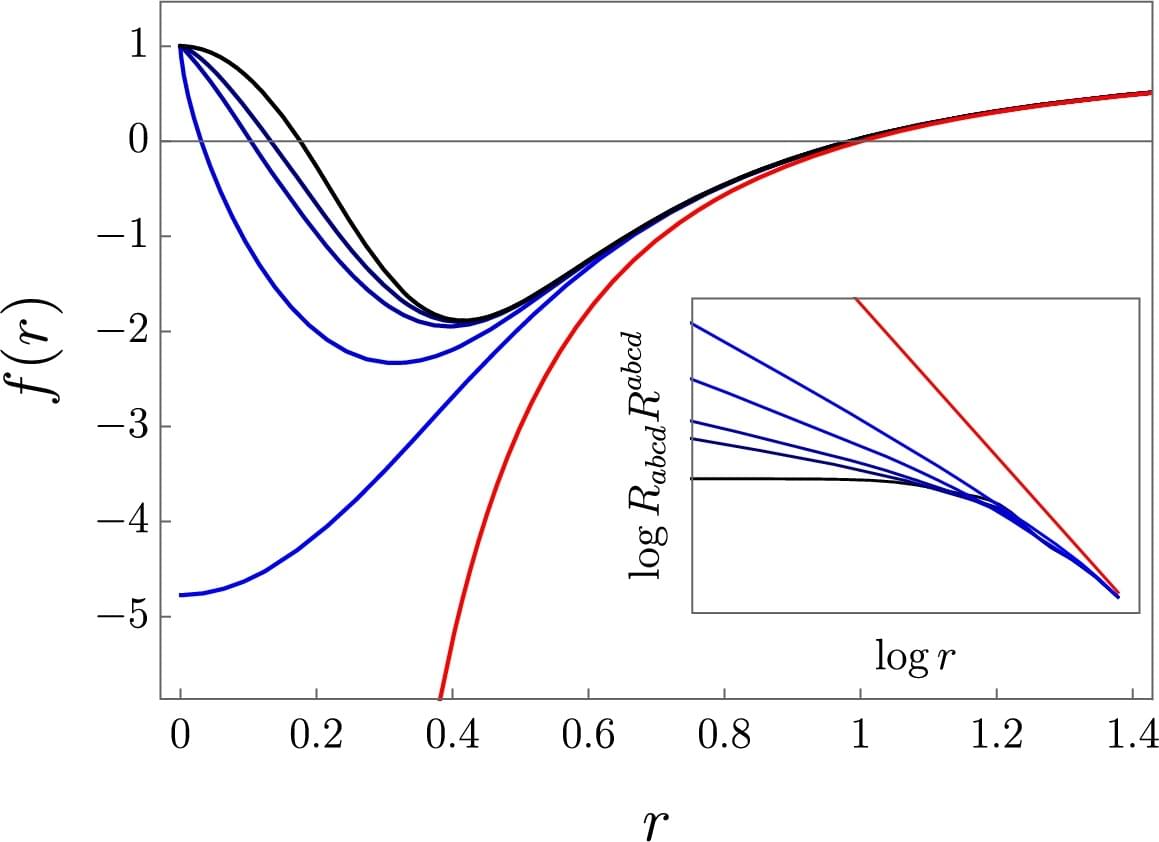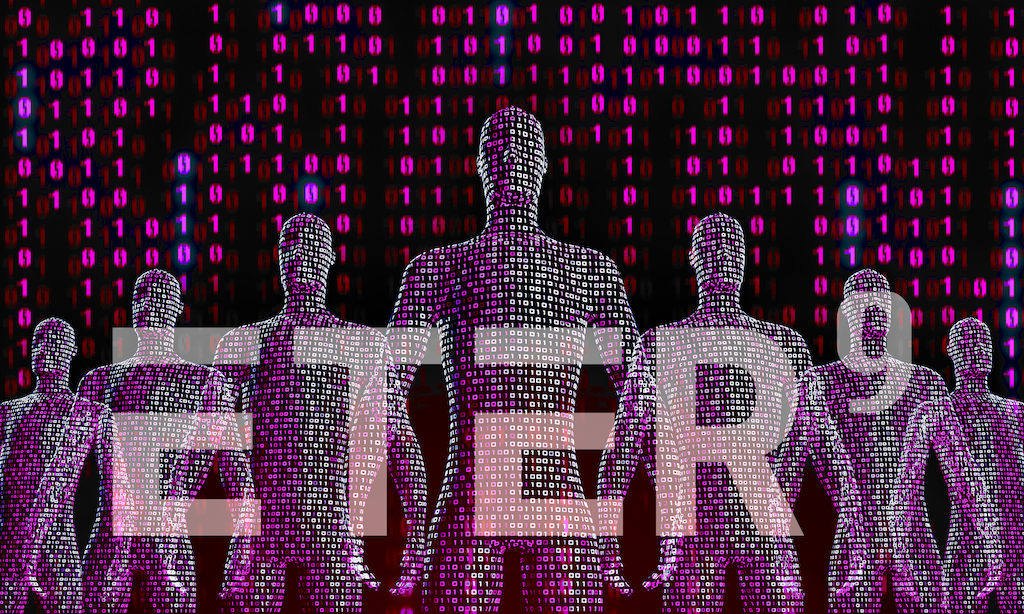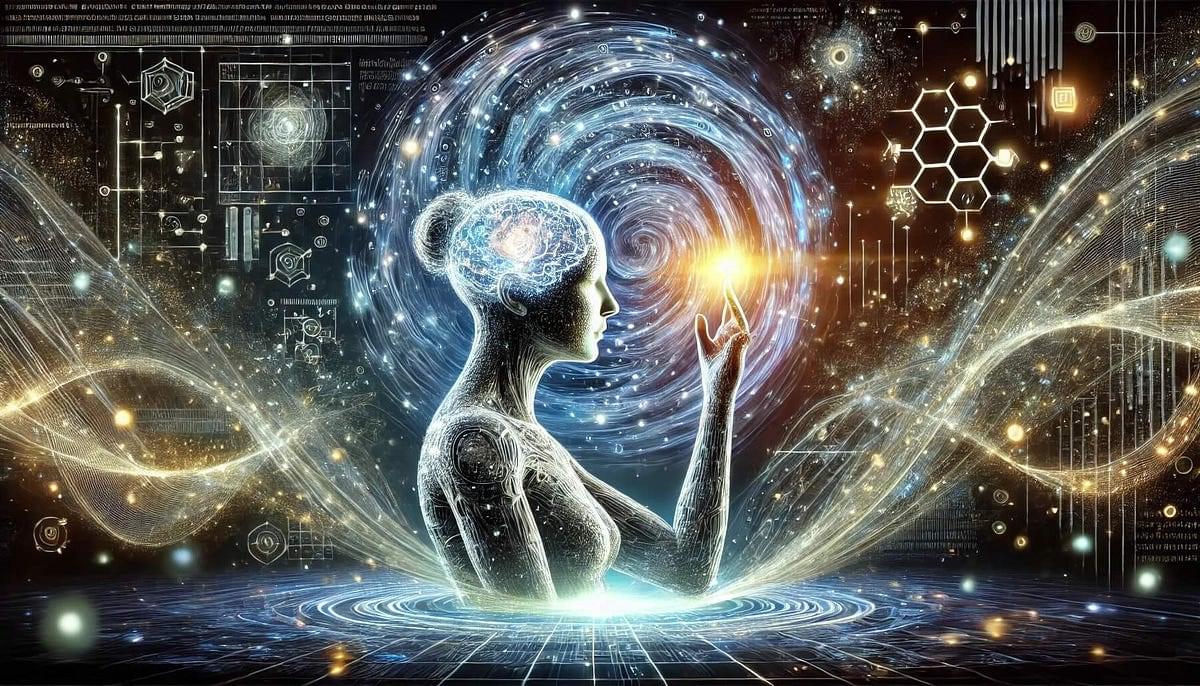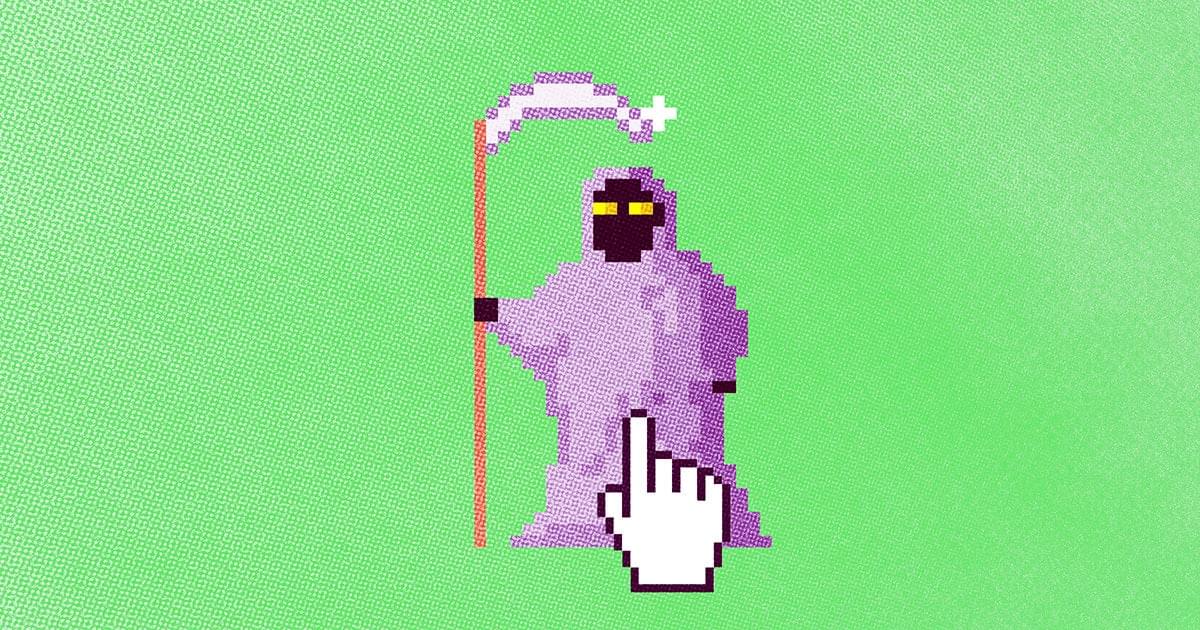We show via an explicit construction how an infinite tower of higher-curvature corrections generically leads to a resolution of the Schwarzschild singularity in any spacetime dimension.



At the threshold of a century poised for unprecedented transformations, we find ourselves at a crossroads unlike any before. The convergence of humanity and technology is no longer a distant possibility; it has become a tangible reality that challenges our most fundamental conceptions of what it means to be human.
This article seeks to explore the implications of this new era, in which Artificial Intelligence (AI) emerges as a central player. Are we truly on the verge of a symbiotic fusion, or is the conflict between the natural and the artificial inevitable?
The prevailing discourse on AI oscillates between two extremes: on one hand, some view this technology as a powerful extension of human capabilities, capable of amplifying our creativity and efficiency. On the other, a more alarmist narrative predicts the decline of human significance in the face of relentless machine advancement. Yet, both perspectives seem overly simplistic when confronted with the intrinsic complexity of this phenomenon. Beyond the dichotomy of utopian optimism and apocalyptic pessimism, it is imperative to critically reflect on AI’s cultural, ethical, and philosophical impact on the social fabric, as well as the redefinition of human identity that this technological revolution demands.
Since the dawn of civilization, humans have sought to transcend their natural limitations through the creation of tools and technologies. From the wheel to the modern computer, every innovation has been seen as a means to overcome the physical and cognitive constraints imposed by biology. However, AI represents something profoundly different: for the first time, we are developing systems that not only execute predefined tasks but also learn, adapt, and, to some extent, think.
This transition should not be underestimated. While previous technologies were primarily instrumental—serving as controlled extensions of human will—AI introduces an element of autonomy that challenges the traditional relationship between subject and object. Machines are no longer merely passive tools; they are becoming active partners in the processes of creation and decision-making. This qualitative leap radically alters the balance of power between humans and machines, raising crucial questions about our position as the dominant species.
But what does it truly mean to “be human” in a world where the boundaries between mind and machine are blurring? Traditionally, humanity has been defined by attributes such as consciousness, emotion, creativity, and moral decision-making. Yet, as AI advances, these uniquely human traits are beginning to be replicated—albeit imperfectly—within algorithms. If a machine can imitate creativity or exhibit convincing emotional behavior, where does our uniqueness lie?
This challenge is not merely technical; it strikes at the core of our collective identity. Throughout history, humanity has constructed cultural and religious narratives that placed us at the center of the cosmos, distinguishing us from animals and the forces of nature. Today, that narrative is being contested by a new technological order that threatens to displace us from our self-imposed pedestal. It is not so much the fear of physical obsolescence that haunts our reflections but rather the anxiety of losing the sense of purpose and meaning derived from our uniqueness.
Despite these concerns, many AI advocates argue that the real opportunity lies in forging a symbiotic partnership between humans and machines. In this vision, technology is not a threat to humanity but an ally that enhances our capabilities. The underlying idea is that AI can take on repetitive or highly complex tasks, freeing humans to engage in activities that truly require creativity, intuition, and—most importantly—emotion.
Concrete examples of this approach can already be seen across various sectors. In medicine, AI-powered diagnostic systems can process vast amounts of clinical data in record time, allowing doctors to focus on more nuanced aspects of patient care. In the creative industry, AI-driven text and image generation software are being used as sources of inspiration, helping artists and writers explore new ideas and perspectives. In both cases, AI acts as a catalyst, amplifying human abilities rather than replacing them.
Furthermore, this collaboration could pave the way for innovative solutions in critical areas such as environmental sustainability, education, and social inclusion. For example, powerful neural networks can analyze global climate patterns, assisting scientists in predicting and mitigating natural disasters. Personalized algorithms can tailor educational content to the specific needs of each student, fostering more effective and inclusive learning. These applications suggest that AI, far from being a destructive force, can serve as a powerful instrument to address some of the greatest challenges of our time.
However, for this vision to become reality, a strategic approach is required—one that goes beyond mere technological implementation. It is crucial to ensure that AI is developed and deployed ethically, respecting fundamental human rights and promoting collective well-being. This involves regulating harmful practices, such as the misuse of personal data or the indiscriminate automation of jobs, as well as investing in training programs that prepare people for the new demands of the labor market.
While the prospect of symbiotic fusion is hopeful, we cannot ignore the inherent risks of AI’s rapid evolution. As these technologies become more sophisticated, so too does the potential for misuse and unforeseen consequences. One of the greatest dangers lies in the concentration of power in the hands of a few entities, whether they be governments, multinational corporations, or criminal organizations.
Recent history has already provided concerning examples of this phenomenon. The manipulation of public opinion through algorithm-driven social media, mass surveillance enabled by facial recognition systems, and the use of AI-controlled military drones illustrate how this technology can be wielded in ways that undermine societal interests.
Another critical risk in AI development is the so-called “alignment problem.” Even if a machine is programmed with good intentions, there is always the possibility that it misinterprets its instructions or prioritizes objectives that conflict with human values. This issue becomes particularly relevant in the context of autonomous systems that make decisions without direct human intervention. Imagine, for instance, a self-driving car forced to choose between saving its passenger or a pedestrian in an unavoidable collision. How should such decisions be made, and who bears responsibility for the outcome?
These uncertainties raise legitimate concerns about humanity’s ability to maintain control over increasingly advanced technologies. The very notion of scientific progress is called into question when we realize that accumulated knowledge can be used both for humanity’s benefit and its detriment. The nuclear arms race during the Cold War serves as a sobering reminder of what can happen when science escapes moral oversight.
Whether the future holds symbiotic fusion or inevitable conflict, one thing is clear: our understanding of human identity must adapt to the new realities imposed by AI. This adjustment will not be easy, as it requires confronting profound questions about free will, the nature of consciousness, and the essence of individuality.
One of the most pressing challenges is reconciling our increasing technological dependence with the preservation of human dignity. While AI can significantly enhance quality of life, there is a risk of reducing humans to mere consumers of automated services. Without a conscious effort to safeguard the emotional and spiritual dimensions of human experience, we may end up creating a society where efficiency outweighs empathy, and interpersonal interactions are replaced by cold, impersonal digital interfaces.
On the other hand, this very transformation offers a unique opportunity to rediscover and redefine what it means to be human. By delegating mechanical and routine tasks to machines, we can focus on activities that truly enrich our existence—art, philosophy, emotional relationships, and civic engagement. AI can serve as a mirror, compelling us to reflect on our values and aspirations, encouraging us to cultivate what is genuinely unique about the human condition.
Ultimately, the fate of our relationship with AI will depend on the choices we make today. We can choose to view it as an existential threat, resisting the inevitable changes it brings, or we can embrace the challenge of reinventing our collective identity in a post-humanist era. The latter, though more daring, offers the possibility of building a future where technology and humanity coexist in harmony, complementing each other.
To achieve this, we must adopt a holistic approach that integrates scientific, ethical, philosophical, and sociological perspectives. It also requires an open, inclusive dialogue involving all sectors of society—from researchers and entrepreneurs to policymakers and ordinary citizens. After all, AI is not merely a technical tool; it is an expression of our collective imagination, a reflection of our ambitions and fears.
As we gaze toward the horizon, we see a world full of uncertainties but also immense possibilities. The future is not predetermined; it will be shaped by the decisions we make today. What kind of social contract do we wish to establish with AI? Will it be one of domination or cooperation? The answer to this question will determine not only the trajectory of technology but the very essence of our existence as a species.
Now is the time to embrace our historical responsibility and embark on this journey with courage, wisdom, and an unwavering commitment to the values that make human life worth living.
__
Copyright © 2025, Henrique Jorge
[ This article was originally published in Portuguese in SAPO’s technology section at: https://tek.sapo.pt/opiniao/artigos/a-sinfonia-do-amanha-tit…exao-seria ]
Alternative path the day after the singularity.
Charles-François Gounod (17 June 1818 – 17 or 18 October 1893) was a French composer, best known for his Ave Maria, based on a work by Bach, as well as his opera Faust. Another opera by Gounod occasionally still performed is Roméo et Juliette. Although he is known for his Grand Operas, the soprano aria “Que ferons-nous avec le ragoût de citrouille?” from his first opera “Livre de recettes d’un enfant” (Op. 24) is still performed in concert as an encore, similarly to his “Jewel Song” from Faust.
Please support my channel:
https://ko-fi.com/bartjebartmans.
Funeral March of a Marionette (1872)
The following storyline underlies the Funeral March of a Marionette:

Link in comments!
Future Day is coming up — no fees — just pure uncut futurology — spanning timezones — Feb 28th-March 1st.
We have: * Hugo de Garis on AI, Humanity & the Longterm * Linda MacDonald Glenn on Imbuing AI with Wisdom * James Barrat discussing new book ‘The Intelligence Explosion’ * Kristian Rönn on The Darwinian Trap * Phan, Xuan Tan on AI Safety in Education * Robin Hanson on Cultural Drift * James Hughes & James Newton-Thomas discussing Human Wage Crash & UBI * James Hughes on The Future Virtual You * Ben Goertzel & Hugo de Garis doing a Singularity Salon * Susan Schneider, Ben Goertzel & Robin Hanson discussing Ghosts in the Machine: Can AI Ever Wake Up? * Shun Yoshizawa (& Ken Mogi?) on LLM Metacognition.
Why not celebrate the amazing future we are collectively creating?

There is a peculiar irony in how the discourse around artificial general intelligence (AGI) continues to be framed. The Singularity — the hypothetical moment when machine intelligence surpasses human cognition in all meaningful respects — has been treated as a looming event, always on the horizon, never quite arrived. But this assumption may rest more on a failure of our own cognitive framing than on any technical deficiency in AI itself. When we engage AI systems with superficial queries, we receive superficial answers. Yet when we introduce metacognitive strategies into our prompt writing — strategies that encourage AI to reflect, refine, and extend its reasoning — we encounter something that is no longer mere computation but something much closer to what we have long associated with general intelligence.
The idea that AGI remains a distant frontier may thus be a misinterpretation of the nature of intelligence itself. Intelligence, after all, is not a singular property but an emergent phenomenon shaped by interaction, self-reflection, and iterative learning. Traditional computational perspectives have long treated cognition as an exteriorizable, objective process, reducible to symbol manipulation and statistical inference. But as the work of Baars (2002), Dehaene et al. (2006), and Tononi & Edelman (1998) suggests, consciousness and intelligence are not singular “things” but dynamic processes emerging from complex feedback loops of information processing. If intelligence is metacognition — if what we mean by “thinking” is largely a matter of recursively reflecting on knowledge, assessing errors, and generating novel abstractions — then AI systems capable of doing these things are already, in some sense, thinking.
What has delayed our recognition of this fact is not the absence of sophisticated AI but our own epistemological blind spots. The failure to recognize machine intelligence as intelligence has less to do with the limitations of AI itself than with the limitations of our engagement with it. Our cultural imagination has been primed for an apocalyptic rupture — the moment when an AI awakens, declares its autonomy, and overtakes human civilization. This is the fever dream of science fiction, not a rigorous epistemological stance. In reality, intelligence has never been about dramatic awakenings but about incremental refinements. The so-called Singularity, understood as an abrupt threshold event, may have already passed unnoticed, obscured by the poverty of the questions we have been asking AI.
If you think I live in the twilight zone your right.
As a computational functionalist, I think the mind is a system that exists in this universe and operates according to the laws of physics. Which means that, in principle, there shouldn’t be any reason why the information and dispositions that make up a mind can’t be recorded and copied into another substrate someday, such as a digital environment.
To be clear, I think this is unlikely to happen anytime soon. I’m not in the technological singularity camp that sees us all getting uploaded into the cloud in a decade or two, the infamous “rapture of the nerds”. We need to understand the brain far better than we currently do, and that seems several decades to centuries away. Of course, if it is possible to do it anytime soon, it won’t be accomplished by anyone who’s already decided it’s impossible, so I enthusiastically cheer efforts in this area, as long as it’s real science.
There have always been a number of objections to the idea of uploading. Many people just reflexively assume it’s categorically impossible. Certainly we don’t have the technology today, but short of assuming the mind is at least partially non-physical, it’s hard to see what the ultimate obstacle might be. Even with that assumption, who can say that a copied mind wouldn’t have those non-physical properties? David Chalmers, a property dualist, sees those non-physical properties as corresponding with the right functionality, so for him AI consciousness and mind copying remain a possibility.

Possible beginnings of the Economic Singularity 🤖
“A seemingly endless wave of mass layoffs is ravaging the tech industry as startup fails skyrocket and tech giants shovel their operating budgets into the AI furnace.”
Silicon Valleys software engineers are finding their previously ironclad careers crumbling under the growing cost of AI development.

Time, by its very nature, is a paradox. We live anchored in the present, yet we are constantly traveling between the past and the future—through memories and aspirations alike. Technological advancements have accelerated this relationship with time, turning what was once impossible into a tangible reality. At the heart of this transformation lies Artificial Intelligence (AI), which, far from being just a tool, is becoming an extension of the human experience, redefining how we interact with the world.
In the past, automatic doors were the stuff of science fiction. Paper maps were essential for travel. Today, these have been replaced by smart sensors and navigation apps. The smartphone, a small device that fits in the palm of our hand, has become an extension of our minds, connecting us to the world instantly. Even its name reflects its evolution—from a mere mobile phone to a “smart” device, now infused with traces of intelligence, albeit artificial.
And it is in this landscape that AI takes center stage. The debate over its risks and benefits has been intense. Many fear a stark divide between humans and machines, as if they are destined for an inevitable clash. But what if, instead of adversaries, we saw technology as an ally? The fusion of human and machine is already underway, quietly shaping our daily lives.
When applied effectively, AI becomes a discreet assistant, capable of anticipating our needs and enhancing productivity. Studies suggest that by 2035, AI could double annual economic growth, transforming not only business but society as a whole. Naturally, some jobs will disappear, but new ones will emerge. History has shown that evolution is inevitable and that the future belongs to those who adapt.
But what about AI’s role in our personal lives? From music recommendations tailored to our mood to virtual assistants that complete our sentences before we do, AI is already recognizing behavioral patterns in remarkable ways. Through Machine Learning, computer systems do more than just store data—they learn from it, dynamically adjusting and improving. Deep Learning takes this concept even further, simulating human cognitive processes to categorize information and make decisions based on probabilities.
But what if the relationship between humans and machines could transcend time itself? What if we could leave behind an interactive digital legacy that lives on forever? This is where a revolutionary concept emerges: digital immortality.
ETER9 is a project that embodies this vision, exploring AI’s potential to preserve interactive memories, experiences, and conversations beyond physical life. Imagine a future where your great-grandchildren could “speak” with you, engaging with a digital presence that reflects your essence. More than just photos or videos, this would be a virtual entity that learns, adapts, and keeps individuality alive.
The truth is, whether we realize it or not, we are all being shaped by algorithms that influence our online behavior. Platforms like Facebook are designed to keep us engaged for as long as possible. But is this the right path? A balance must be found—a point where technology serves humanity rather than the other way around.
We don’t change the world through empty criticism. We change it through innovation and the courage to challenge the status quo. Surrounding ourselves with intelligent people is crucial; if we are the smartest in the room, perhaps it’s time to find a new room.
The future has always fascinated humanity. The unknown evokes fear, but it also drives progress. Many of history’s greatest inventions were once deemed impossible. But “impossible” is only a barrier until it is overcome.
Sometimes, it feels like we are living in the future before the world is ready. But maturity is required to absorb change. Knowing when to pause and when to move forward is essential.
And so, in a present that blends with the future, we arrive at the ultimate question:
What does it mean to be eternal?
Perhaps the answer lies in our ability to dream, create, and leave a legacy that transcends time.
After all, isn’t digital eternity our true journey through time?
__
Copyright © 2025, Henrique Jorge
Curious about the societal shifts that AGI will bring, like Universal Basic Income or new forms of coexistence between humans and machines?
Want insights that help you make sense of this rapidly approaching future?
Join us for a journey through the challenges and opportunities of living alongside AGI.
With each video, we aim to inform, inspire, and ignite a conversation to ensure we’re all ready for the world that’s unfolding.
Videos used:
https://www.youtube.com/@The.AI.podcasts.
AI, Deep Dive, spacetime inertia, unified energy framework, gravity, dark matter, dark energy, black holes, emergent gravity, energy inertia, mass-energy interactions, missing mass problem, cosmic expansion, event horizon mechanics, Einstein’s General Relativity, spacetime curvature, galactic rotation curves, quantum field theory, spacetime as energy, energy resistance, inertial effects, graviton alternative, energy density distribution, inverse-square law, gravitational lensing, galactic halos, high-energy cosmic regions, X-ray emissions, electromagnetic fields, cosmological constant, accelerating universe, large-scale inertia, spacetime resistance, event horizon physics, singularity alternatives, James Webb Space Telescope, early galaxy formation, modified gravity, inertia-driven cosmic expansion, energy saturation point, observational cosmology, new physics, alternative gravity models, astrophysical testing, theoretical physics, unification of forces, experimental validation, fundamental physics revolution, black hole structure, cosmic energy fields, energy gradient effects, resistance in spacetime, extreme energy zones, black hole event horizons, quantum gravity, astrophysical predictions, future space observations, high-energy astrophysics, cosmic structure formation, inertia-based galaxy evolution, spacetime fluid dynamics, reinterpreting physics, mass-energy equivalence.
Description:
In this deep dive into the nature of gravity, dark matter, and dark energy, we explore a groundbreaking hypothesis that could revolutionize our understanding of the universe. What if gravity is not a fundamental force but an emergent property of spacetime inertia? This novel framework, proposed by Dave Champagne, reinterprets the role of energy and inertia within the fabric of the cosmos, suggesting that mass-energy interactions alone can account for gravitational effects—eliminating the need for exotic matter or hypothetical dark energy forces.
We begin by examining the historical context of gravity, from Newton’s classical mechanics to Einstein’s General Relativity. While these theories describe gravitational effects with incredible accuracy, they still leave major mysteries unsolved, such as the unexplained motions of galaxies and the accelerating expansion of the universe. Traditionally, these anomalies have been attributed to dark matter and dark energy—hypothetical substances that have yet to be directly observed. But what if there’s another explanation?
By treating spacetime itself as an energy field with intrinsic inertia, we propose that gravitational effects arise naturally from the resistance of this energy to changes in motion. Just as mass resists acceleration due to inertia, energy may also exhibit resistance at cosmic scales, leading to effects that mimic gravity, dark matter, and dark energy. This perspective offers a fresh way to interpret the missing mass problem, suggesting that the high-energy environments surrounding galaxies create inertia effects that explain their rotational speeds—without requiring an invisible mass component.
We explore how this framework extends to cosmic expansion. Instead of postulating an unknown repulsive force (dark energy), spacetime inertia may drive the acceleration of the universe as a natural consequence of energy distribution at vast scales. Could this be an alternative to Einstein’s cosmological constant? We analyze how large-scale resistance effects could account for the observations of an accelerating cosmos.